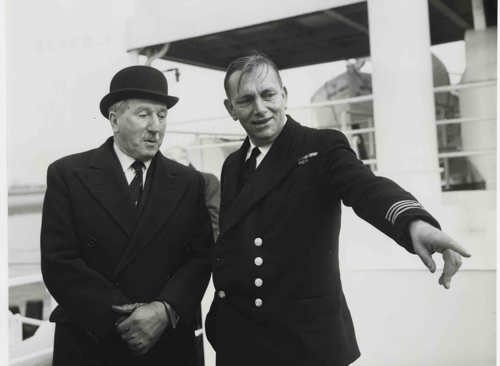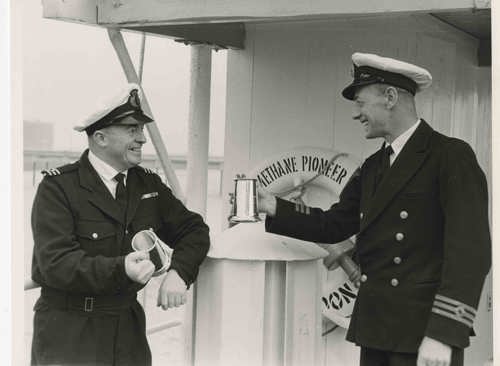Jonathan Westby talks about how the Methane Pioneer made history on February 20th 1959, carrying the world's first ever seagoing cargo of LNG
The Methane Pioneer in 1959. Churchill Archives Centre, Cambridge; The Papers of Sir Kenneth Hutchison, HTSN A.212
Here at Centrica, we have a proud history in the world of liquefied natural gas. In fact, sixty years ago to the day, we were involved in an exciting new development in the history of the shipping industry, as the first seaborne cargo of liquefied natural gas (LNG) arrived at British Gas Council’s Canvey Island Terminal on board the 5,000m3 Methane Pioneer. The 24-day voyage across the Atlantic from Louisiana in the USA demonstrated that large quantities of LNG could be transported safely across the oceans.
Since the Methane Pioneer’s ground-breaking journey, LNG has been transported throughout the world. Today, at Centrica, we are playing an increasing role in global LNG, an industry that represents a significant and growing share of the world’s energy mix, enough to power over half a billion homes.
The success of LNG was down to years of research, and was accelerated by a public health crisis in the UK in the early 1950s. The country’s heavy reliance on coal led to the Great Smog of 1952, as a combination of coal smoke and climatic conditions ground London to a halt. The episode caused 100,000 Londoners to fall ill and was directly linked to over 4,000 fatalities.
The Clean Air Act was passed in 1956, and encouraged the use of gas for domestic heating and cooking throughout the UK. At the time, gas extracted from coal – known as town gas - accounted for less than 6% of the UK’s energy mix and with the discovery of North Sea gas still a decade away, the UK had no known natural gas resources.
The British Gas Council led the hunt to find new sources of natural gas, and sent a delegation to the US to evaluate the work of Constock, established in 1955 to research the commercial feasibility of LNG transport by sea.
Sir Kenneth Hutchison, Chairman of British Gas’ South Eastern Board, and the UK Minister of Power, Lord Mills, onboard the Methane Pioneer. Churchill Archives Centre, Cambridge; The Papers of Sir Kenneth Hutchison, HTSN A.212
The group was sufficiently impressed to recommend that a project be mounted to send trial shipments of LNG from the US to the UK on behalf of the British Gas Council. The result was the Methane Pioneer; a converted World War Two dry cargo ship capable of transporting a capacity of 5000m3 at super chilled temperatures.
| LNG is natural gas that has been cooled to a liquid state, at about -162°C, for shipping and storage. The volume of natural gas in its liquid state is about 600 times smaller than its volume in its gaseous state. This process makes it possible to transport natural gas to places pipelines do not reach. |
The imaginative project created a great deal of public interest, and headlines such as ‘Londoners to cook by Texas gas’ appeared in local newspapers as the Methane Pioneer docked at Canvey Island on a cold and misty February morning in 1959.

Sir Kenneth Hutchison, Chairman of British Gas’ South Eastern Board, onboard the Methane Pioneer. Churchill Archives Centre, Cambridge; The Papers of Sir Kenneth Hutchison, HTSN A.212
After six additional cargoes had been delivered in the 14 months that followed, the experiment was deemed a success. Within a year, the UK Government had approved the purchase of 700,000 tonnes of LNG per annum from Algeria, in a 15 year-deal that commenced in 1964. The scene had been set for the birth of the commercial LNG industry that would transform the global energy system as we know it today.
Sixty years on, over 300 million tonnes of LNG is shipped around the World annually. At Centrica, we will begin our first long-term LNG export contract from Louisiana in September, which will provide a flexible LNG supply source capable of powering the equivalent of over two million homes. In comparison to the Methane Pioneer, vessels today can now carry over 30 times more gas and take half the time to transit the Atlantic to the UK.
